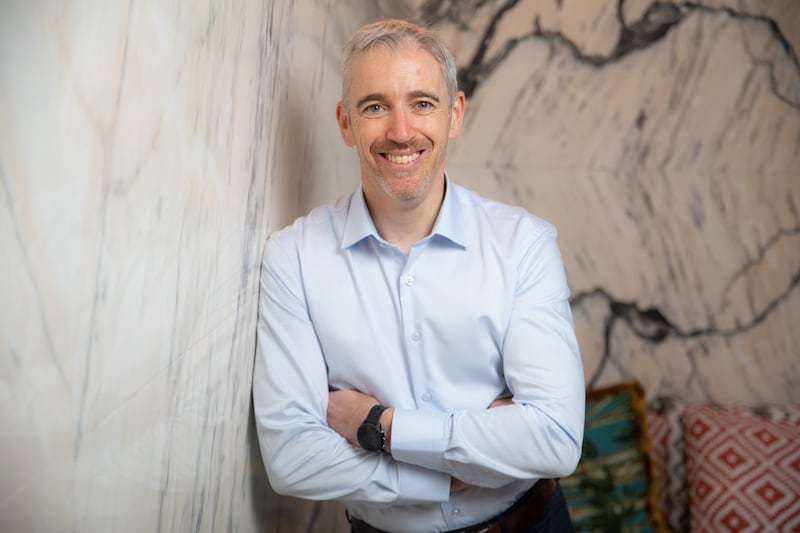With Ireland experiencing full employment, sometimes defined as when all available labour resources have been used in the most efficient manner, the next question to look at is how work has changed since the pandemic and how it will continue to change in the future.
Joe Peppard, professor and academic director of digital business, innovation and transformation at UCD, likes to put the future of work into context. “Remote working,” he says, “has always been available to certain careers but the pandemic showed it was possible for a great number of people.
“Overnight, employees could not come to the office and if that had happened 30 years ago, without the benefit of the internet, then it would have been a disaster. But the emergence of cloud computing and modern forms of communication allowed people to function.”
Peppard has talked to global chief executives who told him they realised it was possible to run their companies from the kitchen table, without being in the office and without travelling to sites around the world.
READ MORE
“Post-pandemic, while certain cohorts like graduate hires were very keen to get into the office to meet their peers, the majority of people realised they could have a work-life balance by employing a hybrid approach to working,” says Peppard.

No substitute for face-to-face interaction
Three’s chief people officer, Mark Redmond, explains how the telecommunications and internet service provider now looks at the way in which its employees work.
“Over the pandemic we came to realise that the hybrid model was definitely the way we wanted to move forward. Naturally, we’d have an expectation for partial customer-facing roles to be in the office but, aside from that, we only ask our employees to be in the office two to three days a week,” he says.
Three conducted an employee engagement survey in January, part of a regular series of employee surveys, which asked how people felt about its hybrid flexible working policies: 84 per cent said they were very happy with the policies.
However, Redmond stresses the importance of employees spending time together in person. “Remote video calls are great but they are no substitute for face-to-face interactions, so we know we need a balance,” he says.
Other benefits of hybrid working include cutting down on commuting. “For some of our employees living a distance from the office, this is a definite benefit in terms of time and cost,” says Redmond. “Interestingly, other employees point to sustainability and the fact that it is greener not to commute on a daily basis.”
Trusting people to do their jobs
Peppard talks of trust being an important element with hybrid working. “‘Presenteeism’ is a kind of culture which sometimes enforces the absurd. An employee might get up early, go into the office and plug in their laptop, and work all day before unplugging that laptop and travelling home. That kind of presenteeism is being challenged.
“In addition, telling people what to do and supervising them is very old fashioned. If a person is hired to do a job and has those capabilities, then within certain guardrails they should be let do just that. Give an employee purpose and the employer trust.”
We don’t like to dictate which days people come into the office. We trust our employees to make the best decisions for them and for their work
— Mark Redmond
Peppard argues that the issue of purpose for large companies can be particularly difficult when trying to maintain cultural cohesion. “It is a process,” he says. “I think companies are still trying to figure out how to make sure everyone is moving in the same direction. It’ll take time to see what works best.”
Redmond has some interesting observations on trust too. “We think hybrid is here to stay and, for us, we don’t like to dictate which days people come into the office. We trust our employees to make the best decisions for them and for their work. We believe flexibility combined with purpose creates the best outcomes for all.”
A healthy office space

On the flipside, Peppard acknowledges that people are social animals.
“It can be lonely, especially if a person is living alone, and there has been some backlash in mental-health issues,” he says. “I know from personal experience that sometimes those random conversations at the water cooler or in the corridor with another employee can be really important both in terms of work and interconnection.
“A friend of mine who works for a tech company moved jobs over the pandemic but since he worked remotely his office remained the same, which is potentially difficult because people’s views of an organisation are also formed by the physical office – for example, where the office is located, what it looks like, who has a big office and even how people interact at meetings. Working fully remotely denies employees that understanding,” says Peppard.
Eoin Joy, chief property officer at Iconic Offices, which provides flexible workspaces, notes that health is a big issue for employers going forward, not just with regard to culture and communication but also regarding healthy offices in terms of fresh air, lighting and ambience.
“We work with a variety of different clients, some in old Georgian offices and others in modern offices with a sealed-window system,” he says. The lessons of the pandemic mean that in the post-Covid era air flow and quality are essential to a healthy office and while older buildings tend to have windows that can be opened, modern ones rely on mechanical ventilation systems.
“Standard office buildings tend to supply 10 litres of fresh air per second per person but we architect it so that we can deliver 13 litres, which offers 30 per cent more capacity of fresh air per employee,” says Joy.














